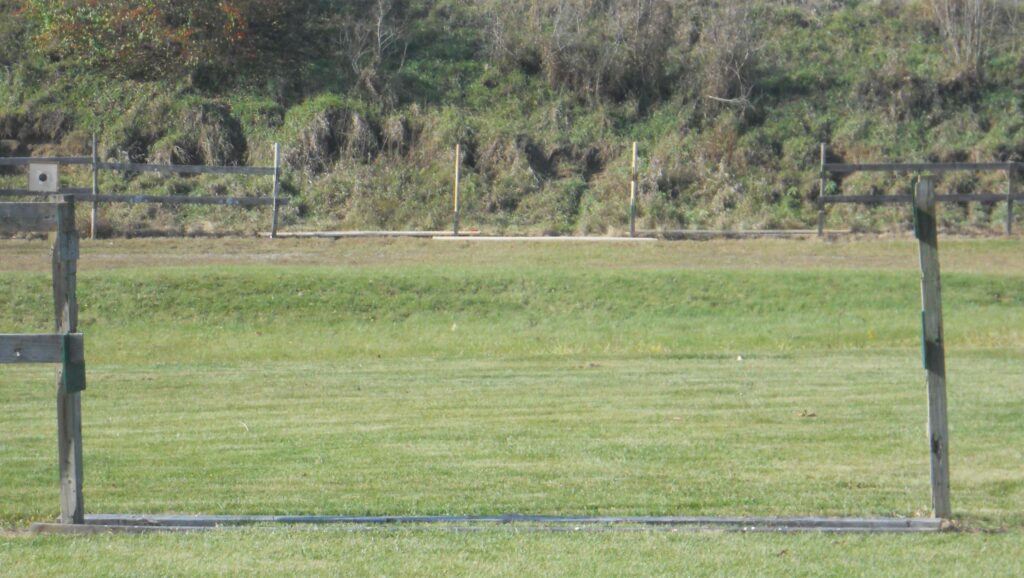A picture is worth a whole bunch of words, so I took a few pictures to illustrate the points I had made in the “Range Maintenance” post from a couple of days ago.
Our covered range is laid out in a strange way with the 100-yard target frames lying in the 25-yard and 50-yard impact area. This results in the 100-yard frames getting damage from shots being fired on the shorter ranges. The range layout makes some damage unavoidable, but we can minimize damage with a bit of attention to how we shoot.

One of the primary rules of range safety is to make sure that you know where your shots are going to land. Just landing them in the 100-yard impact berm isn’t really the only goal, hitting as little of the 100-yard lumber should also be kept in mind.

The first picture shows a target set up in the 25-yard frame. Look down range from that target – there is a vertical support post for the 100-yard frames directly in line with the posted target. Setting a target like that guarantees that the vertical post in going to be in the line of fire and will take some hits – especially if you are doing a good job of staying in the black.

Now, look at the second picture. The target is in the exact same position, but if the shooter just moves a bit to the right or left, the point of impact moves considerably – in between two vertical posts. Ladies and Gentlemen – please pay attention to what is downrange and don’t line up the hot zone of your target face with downrange lumber.
Most of the hits to 100-yard structures from shots fired from the 25-yard line are low hits or ricochets. To minimize the damage to the bottoms of the vertical supports, we added some sacrificial lumber to the bottoms of the posts. We can replace these pieces of lumber as they get shot away and reduce damage to vertical supports.

Last of all, we see damage to the horizontal cross pieces from ricochets hitting in front of the 100-yard frames. At times it looks like a farmer has dropped a plow and cut furrows in front of the target frames. This damage is primarily to three of the center sections of horizontal pieces.
To further reduce damage, we are requesting that:
- If you are shooting at 50 or 25-yards, if the three center horizontal sections at 100-yards are in place, please remove them before you shoot. Just lay them on the ground in front or behind the frames. When you finish – just leave them down. That is their “stored” position.
- If you are shooting at 100-yards, the sections of horizontal frames at the south end and north end of the firing line are out of the 25 and 50-yard line of fire. Those horizontal frames will stay up at all times. If you need to use the three center sections, go ahead and mount them in the frames – but when you finish shooting – please put them back on the ground. That will protect them from most ricochet damage.

This will take a little more effort on the part of shooters, but it will make life a lot easier for the people who take time to keep our range facilities in good repair.
Thank You – and Be Safe!